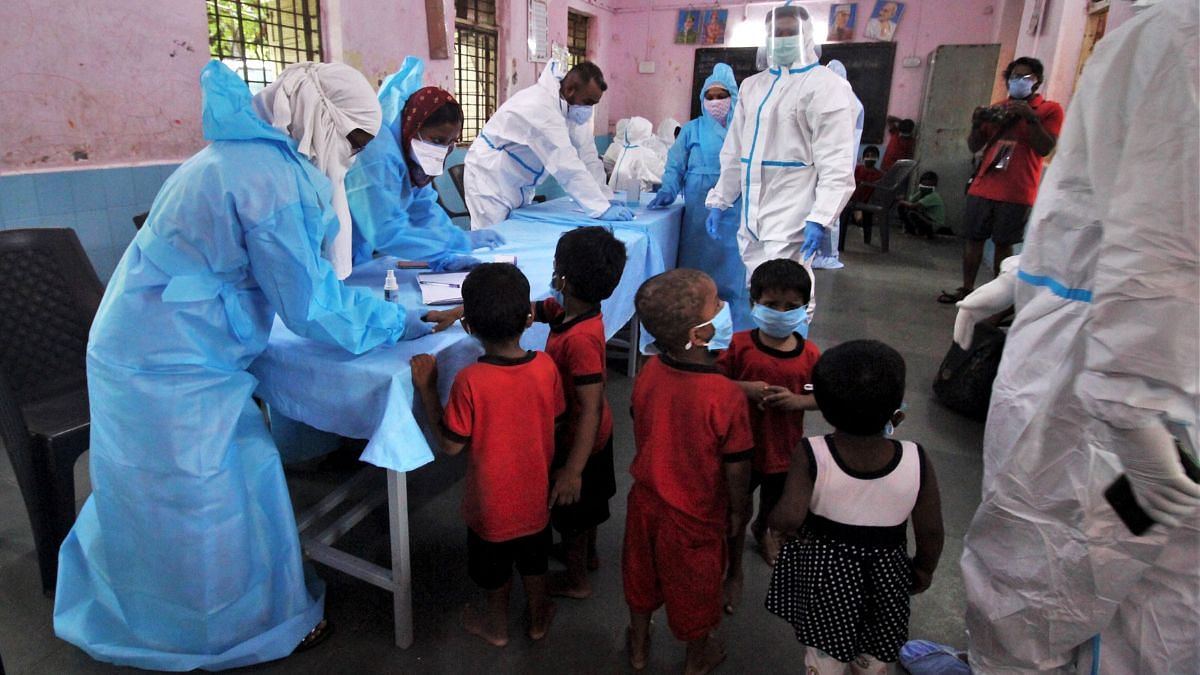New Delhi: The Centre’s spending on healthcare remains very low, has seen its share fall in the total budget since 2017-18, and compares poorly with healthcare spending in other countries, a recent report by Centre for Social and Economic Progress (CSEP) as well as analysis by ThePrint shows.
According to the CSEP report, the share of healthcare spending fell from 2.59 percent of the total budget in 2017-18 to 2.29 percent in 2021-22, coming down further to 1.75 percent in 2023-24.
In the interim budget for 2024-25, the government has allocated 1.89 percent of its total expenditure to the healthcare sector. The full budget for the year will be presented in July this year.
The CSEP report, released last week, revealed that healthcare continues to be one of the lowest priority sectors for India, with both central and state governments assigning it minimal resources.
Over the past 32 years, from 1990 to 2022, the share of healthcare in total government spending has increased only marginally — by just 0.33 percentage points. In 1990, the government spent 0.90 percent of its GDP on healthcare, which fell to 0.78 percent by 1997-98. It was only in 2017-18 that the spending touched the 1 percent threshold.
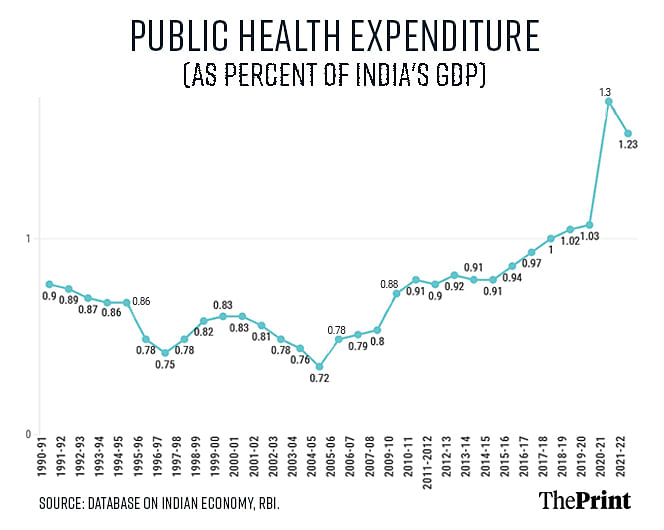
India fares poorly globally
When compared to its counterparts with similar economic backgrounds, the data shows India is one of the worst-performing countries in terms of healthcare spending.
Cuba, which ranks 62nd in the world GDP ranking, spent 10.1 percent of its GDP on healthcare in 2019, according to the CSEP report. Similarly, India’s neighbours like Sri Lanka, Malaysia, Thailand and China spend more on healthcare than India.
In 2019, China spent 3 percent, Thailand 2.7 percent, Malaysia 2 percent, and Sri Lanka 1.9 percent of their GDPs on healthcare, while India spent 1 percent. Nepal overtook India in health spending by 0.1 percentage points. The report, however, did not include data for more recent years.

“Healthcare does not come as a top priority in India because it is never a political priority,” said Dr Sarit Kumar Rout, a Bhubaneswar-based health economist.
Dr Rout further said that 47 percent of India’s health expenditure is ‘out-of-pocket’, which means it is borne directly by a patient where insurance does not cover the full cost of the health good or service.
“There was a huge reduction in out-of-pocket expenditure in 2017 after the government went on to introduce more healthcare establishments like AIIMS in the country. However, the victory did not last for long,” Dr Rout added.
The state-Union spending dynamic
The report also highlighted the state-specific expenditure on healthcare.
According to state expenditure data by the Reserve Bank of India (RBI) for 2023-24, Uttar Pradesh had the highest overall expenditure of Rs 6,59,061 crore, out of which only Rs 25,950.3 crore was for healthcare — 3.9 percent of the state’s expenditure, the second lowest among all states. However, compared to other states, Uttar Pradesh has spent the most on healthcare in absolute numbers.
Telangana allocated just 3.7 percent of its total expenditure on healthcare, the lowest in 2023-24 among all states.
Similarly, Maharashtra, one of the wealthiest states in the country, spent only Rs 23,334.9 crores (4.3 percent) of its Rs 5,37,450 crore expenditure budget.
The highest expenditure on healthcare was done by Delhi — Rs 9,571.9 crore out of Rs 73,759.7 crore, making up 13 percent of its total expenditure. Puducherry followed Delhi at 9.5 percent.
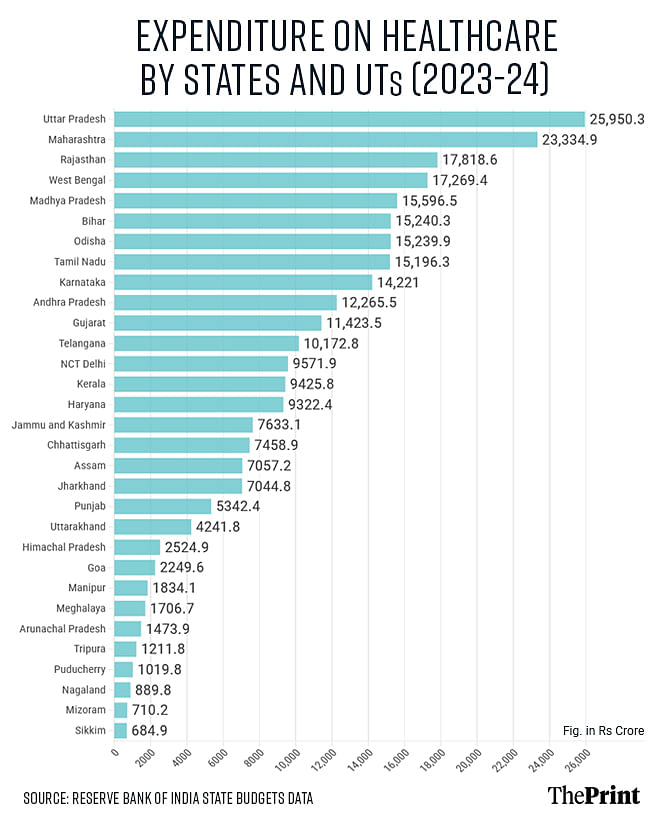
One positive aspect in the Centre-state fiscal dynamic is that Union fiscal transfers to the states for health expenditure have substantially increased over the past 17 years. In 2004-05, the total fiscal transfer to states as a percent of GDP was 4.4 percent, which increased to 6.7 percent in 2020-21.
However, most of these fiscal transfers were through centrally-sponsored schemes (CSS), which provide states less flexibility, instead of direct fiscal transfers, according to Janak Raj, author of the CSEP report and an economist.
“The higher the CSS transfers, the less flexibility states have to utilise the funds according to their needs. States are better served by general purpose transfers than specific transfers in the form of CSSs,” said Raj.
He highlighted in the report that healthcare remains one of the lowest priorities among states.
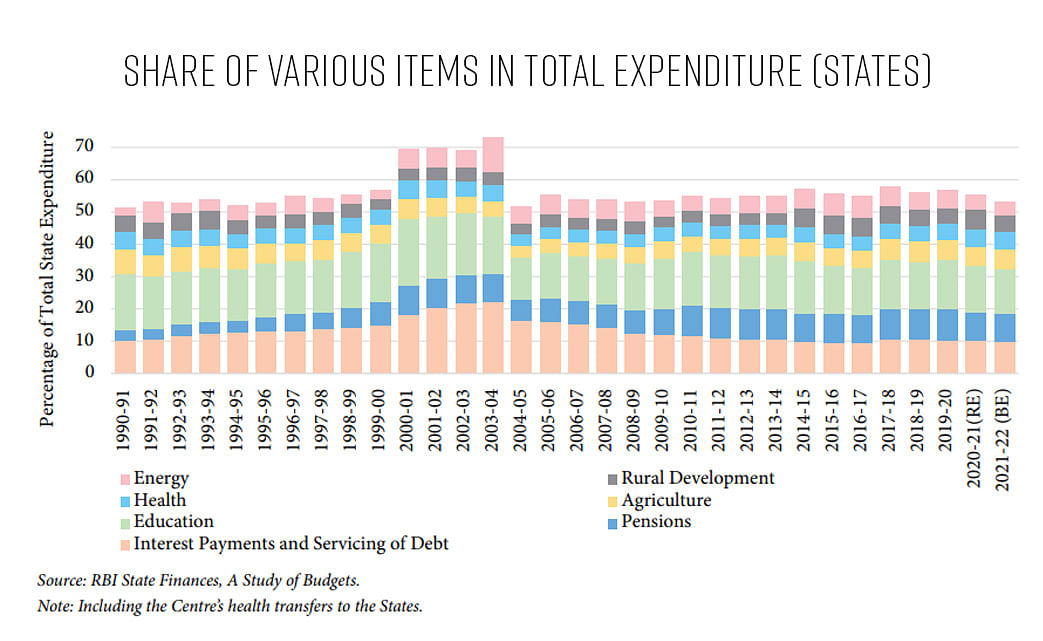
“States’ ability to spend on health is constrained by their committed liabilities, which preempt their resources. For instance, health spending was one of the lowest in the case of Punjab, but it climbs up sharply to be one of the highest among all states when their revenue is adjusted for committed liabilities,” added Raj.
He further mentioned that the implementation of the National Health Mission (NHM) did reduce the burden of spending on states, but that allocations under the programme had been shrinking.
NHM was launched by the government of India in 2013 — subsuming the National Rural Health Mission and National Urban Health Mission — with the objective to increase the availability and accessibility of good quality healthcare for people.
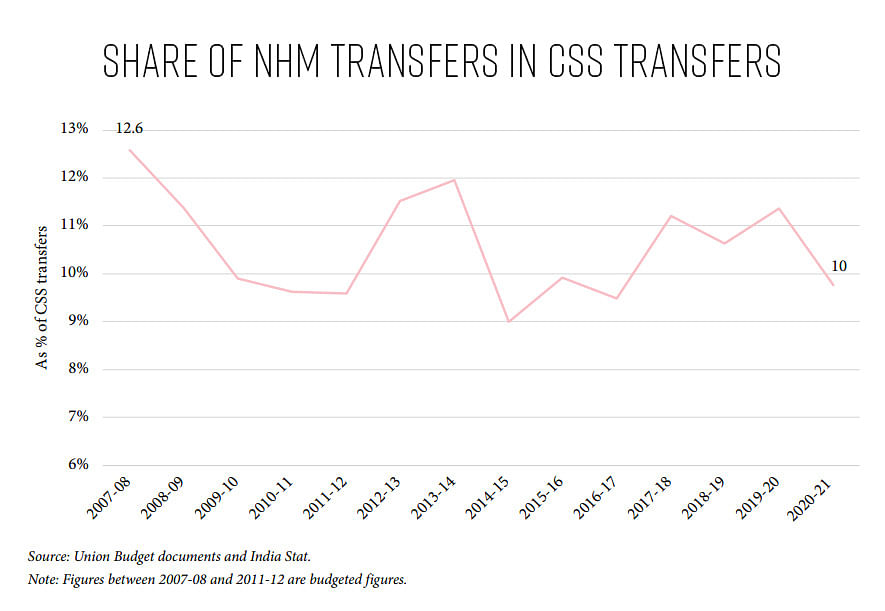
“With funds for NHM squeezing constantly, the allocation of these funds to states has also been shrinking,” explained Dr Rout.
The way forward
Addressing the issue of healthcare spending, Raj said that total spending on healthcare should be at least 2.5 percent of GDP, adding that most of the funds should be concentrated around primary health infrastructure.
“The government should devise a plan that focuses more on the treatment of non-communicable diseases and cover it under CSS, given the disease pattern of India is also changing,” said Dr Rout.
Also read: Andhra has 3rd highest C-section rate in India. How it’s trying to reverse trend, with midwives at helm

